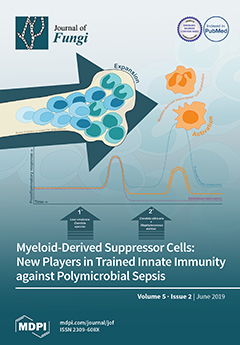Endophytic fungi have proven their usefulness for drug discovery, as suggested by the structural complexity and chemical diversity of their secondary metabolites. The diversity and biological activities of endophytic fungi from the
Terminalia species have been reported. Therefore, we set out to discuss
[...] Read more.
Endophytic fungi have proven their usefulness for drug discovery, as suggested by the structural complexity and chemical diversity of their secondary metabolites. The diversity and biological activities of endophytic fungi from the
Terminalia species have been reported. Therefore, we set out to discuss the influence of seasons, locations, and even the plant species on the diversity of endophytic fungi, as well as their biological activities and secondary metabolites isolated from potent strains. Our investigation reveals that among the 200–250
Terminalia species reported, only thirteen species have been studied so far for their endophytic fungi content. Overall, more than 47 fungi genera have been reported from the
Terminalia species, and metabolites produced by some of these fungi exhibited diverse biological activities including antimicrobial, antioxidant, antimalarial, anti-inflammatory, anti-hypercholesterolemic, anticancer, and biocontrol varieties. Moreover, more than 40 compounds with eighteen newly described secondary metabolites were reported; among these, metabolites are the well-known anticancer drugs, a group that includes taxol, antioxidant compounds, isopestacin, and pestacin. This summary of data illustrates the considerable diversity and biological potential of fungal endophytes of the
Terminalia species and gives insight into important findings while paving the way for future investigations.
Full article






